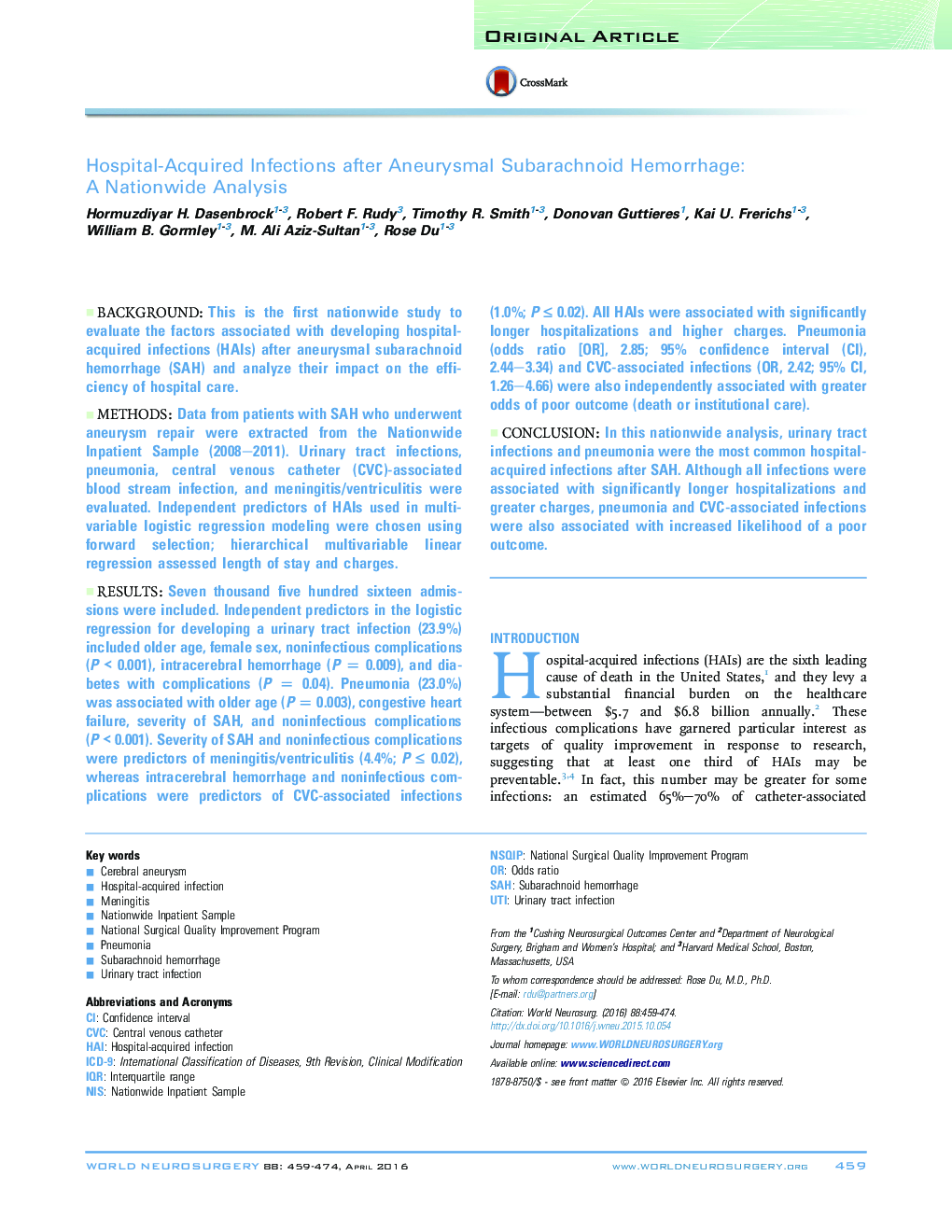| Article ID | Journal | Published Year | Pages | File Type |
|---|---|---|---|---|
| 6044284 | World Neurosurgery | 2016 | 16 Pages |
BackgroundThis is the first nationwide study to evaluate the factors associated with developing hospital-acquired infections (HAIs) after aneurysmal subarachnoid hemorrhage (SAH) and analyze their impact on the efficiency of hospital care.MethodsData from patients with SAH who underwent aneurysm repair were extracted from the Nationwide Inpatient Sample (2008-2011). Urinary tract infections, pneumonia, central venous catheter (CVC)-associated blood stream infection, and meningitis/ventriculitis were evaluated. Independent predictors of HAIs used in multivariable logistic regression modeling were chosen using forward selection; hierarchical multivariable linear regression assessed length of stay and charges.ResultsSeven thousand five hundred sixteen admissions were included. Independent predictors in the logistic regression for developing a urinary tract infection (23.9%) included older age, female sex, noninfectious complications (P < 0.001), intracerebral hemorrhage (P = 0.009), and diabetes with complications (P = 0.04). Pneumonia (23.0%) was associated with older age (P = 0.003), congestive heart failure, severity of SAH, and noninfectious complications (P < 0.001). Severity of SAH and noninfectious complications were predictors of meningitis/ventriculitis (4.4%; P ⤠0.02), whereas intracerebral hemorrhage and noninfectious complications were predictors of CVC-associated infections (1.0%; P ⤠0.02). All HAIs were associated with significantly longer hospitalizations and higher charges. Pneumonia (odds ratio [OR], 2.85; 95% confidence interval (CI), 2.44-3.34) and CVC-associated infections (OR, 2.42; 95% CI, 1.26-4.66) were also independently associated with greater odds of poor outcome (death or institutional care).ConclusionIn this nationwide analysis, urinary tract infections and pneumonia were the most common hospital-acquired infections after SAH. Although all infections were associated with significantly longer hospitalizations and greater charges, pneumonia and CVC-associated infections were also associated with increased likelihood of a poor outcome.
